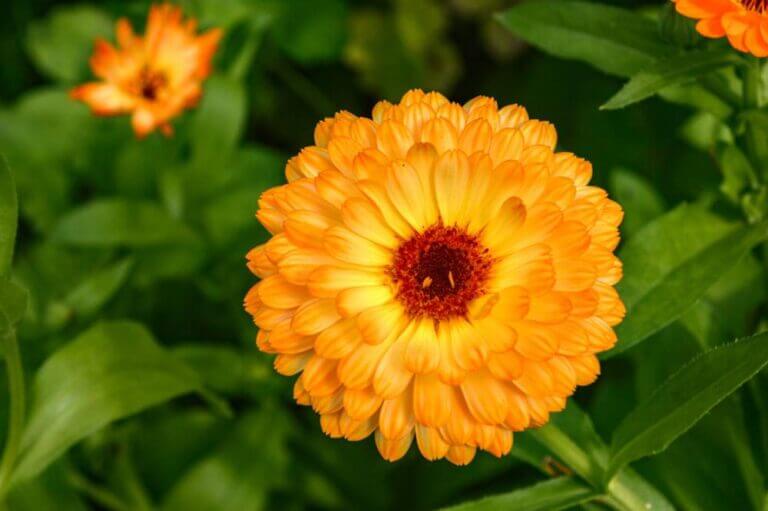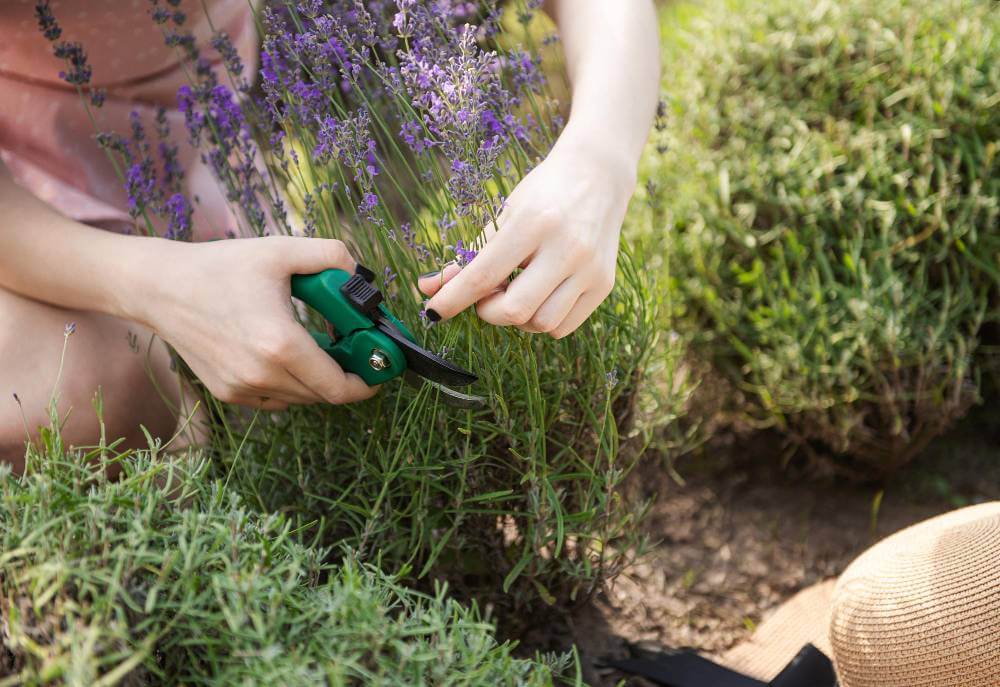Hey there, fellow gardeners! Today, let’s dive into the wonderful world of calendula. Join me as we explore its sunny disposition and how to cultivate it effortlessly in your garden. Ready to add a splash of sunshine to your garden with calendula?
Calendula Unveiled: Harnessing Health Benefits and Garden Versatility
Calendula, often known as marigold, is not merely a bright addition to your garden; it’s a botanical powerhouse revered for its health benefits and diverse applications. Packed with antioxidants, calendula helps combat oxidative stress, protecting cells from damage and bolstering the immune system. Rich in vitamins A, C, and E, it promotes skin health, aiding in the repair of wounds, soothing irritations, and even easing conditions like eczema and acne. Its anti-inflammatory properties make it a go-to herb for reducing swelling and discomfort.
Beyond its medicinal uses, calendula adds a touch of culinary delight. Its vibrant petals can be infused into oils, teas, and salads, imparting a mild, tangy flavor and a cheerful golden hue. In traditional herbal medicine, calendula tea is sipped to support digestive health and overall wellness. Whether in skincare routines, culinary creations, or herbal remedies, calendula shines as a versatile herb that enriches both garden and health alike.
Diverse Delights: Exploring Calendula’s Many Faces
Calendula varieties span a spectrum of colors, from fiery oranges to delicate creams. Each variety brings its own unique flair to the garden, whether you prefer the compact ‘Calendula officinalis’ or the bold ‘Indian Prince’.
With its easy-going nature and ability to thrive in diverse climates, there’s a calendula variety suited to every gardener’s taste.
Annual Charm: Understanding Calendula’s Growth Cycle
While typically grown as an annual, calendula can behave as a short-lived perennial in mild climates, self-seeding for future blooms. Its resilience and ability to adapt make it a favorite among both beginner and seasoned gardeners seeking a reliable burst of color throughout the growing season.
Planting Pro Tips: Sowing Calendula for Success
Spring is the ideal time to sow calendula seeds directly into well-drained soil. Choose a sunny spot in your garden or container where the plants will receive at least 6 hours of sunlight daily. Calendula isn’t fussy about soil type but thrives in soil that’s fertile and well-draining. Whether you start from seeds or seedlings, ensure the plants have adequate spacing to encourage healthy growth and abundant flowering.
Sun Seeker: Meeting Calendula’s Light Requirements
Calendula is a sun-loving plant that thrives in bright, full-sun conditions. When grown outdoors, it flourishes in locations with at least 6 hours of direct sunlight daily. However, for gardeners with limited outdoor space or in regions with short growing seasons, growing calendula indoors under grow lights is a viable option.
Indoors, provide calendula with at least 12-16 hours of artificial light daily to mimic natural sunlight. Choose full-spectrum grow lights designed for plants to ensure adequate light intensity and spectrum. Position the lights 6-12 inches above the plants and adjust as they grow to maintain optimal exposure. With proper lighting and care, calendula can thrive indoors, providing cheerful blooms and herbal benefits year-round.
Winter TLC: Caring for Calendula in Colder Months
As temperatures cool, calendula may slow down or even die back in frost-prone regions. Mulch around the base of the plants to protect the roots and provide insulation during winter. In milder climates, calendula may continue to bloom sporadically, bringing cheer to your garden during the cooler months.
From Seed to Splendor: Nurturing Calendula from Seeds and Seedlings
Growing calendula from seeds is straightforward and rewarding. Sow seeds directly into the garden or start indoors in biodegradable pots, transplanting them outdoors after the last frost. Seedlings offer a head start on the growing season and can be easier to manage initially. Alternatively, propagate new plants by taking stem cuttings from healthy, established calendula and rooting them in a suitable potting mix.
Grow Calendula: Flourish Indoors or Outdoors
Calendula is a versatile plant that thrives both indoors and outdoors, adapting well to different growing conditions. When grown outdoors, choose a location that receives full sun to partial shade.
Indoors, replicate sunlight conditions with grow lights if natural light is insufficient. Provide at least 12-16 hours of light daily for optimal growth. Calendula grown indoors benefits from good air circulation to minimize fungal issues.
Best Soil for Growing Calendula: Nurturing the Sunshine Flower
Calendula thrives in well-drained, moderately fertile soil. It prefers soil that is rich in organic matter, such as compost, to enhance nutrient availability and soil structure. Sandy loam or loamy soils are ideal, as they provide good drainage while retaining moisture.
Avoid heavy clay soils that can become waterlogged, leading to root rot. Similarly, overly rich soils with high nitrogen content may promote lush foliage at the expense of flowers. Calendula is adaptable and can tolerate less-than-ideal soils with proper care, but optimal growth occurs in well-prepared garden beds or containers with fertile, well-drained soil.
Potting Up: Growing Calendula in Containers with Style
Growing calendula in containers offers flexibility, making it ideal for urban gardens, balconies, or small spaces. Choose a container with drainage holes and fill it with a well-draining potting mix. Plant calendula seeds or seedlings at the same depth as they were in their nursery containers.
Place containers in a location that receives full sun for at least 6 hours daily. Water thoroughly when the top inch of soil feels dry to the touch, ensuring excess water drains freely from the bottom of the pot. Calendula grown in pots may require more frequent watering than those in the ground, especially during hot weather. Fertilize monthly with a balanced liquid fertilizer to support healthy growth and abundant blooms.
Hydroponic Harmony: Cultivating Calendula in Water
Growing calendula hydroponically offers a soil-free alternative that promotes efficient nutrient uptake and controlled growth. Set up a hydroponic system with a reservoir filled with nutrient-rich water and a pH-balanced solution. Use a growing medium like perlite or coconut coir to support calendula seedlings or seeds.
Ensure the hydroponic system provides ample light, either through natural sunlight or artificial grow lights designed for plants. Monitor water levels and nutrient concentrations regularly to maintain optimal growing conditions. Calendula grown hydroponically typically requires less water than soil-grown plants but may need more frequent nutrient supplementation to support vigorous growth and flowering.
Quenching Calendula’s Thirst: Watering Tips for Healthy Growth
Calendula thrives with moderate watering, preferring consistently moist but not waterlogged soil. Water deeply when the top inch of soil feels dry, allowing excess water to drain freely from the bottom of containers or garden beds. Avoid overhead watering, as wet foliage can increase the risk of fungal diseases, especially in humid climates.
In hot weather, adjust the watering frequency to prevent drought stress, which can affect flower production. Mulch around calendula plants to retain soil moisture and regulate temperature fluctuations. Water early in the day to minimize evaporation and ensure leaves dry before evening, reducing the risk of fungal infections.
Companion Planting with Calendula: A Garden Symphony
Calendula is a valuable companion plant that attracts beneficial insects like ladybugs, hoverflies, and bees to the garden. These insects pollinate nearby crops and prey on aphids and other garden pests, reducing the need for chemical pesticides. Plant calendula near vegetables such as tomatoes, peppers, and beans to improve pollination and overall garden health.
Ensure adequate spacing between plants to promote airflow and reduce the risk of fungal diseases. Calendula benefits from companions that attract beneficial insects while deterring pests. Consider planting it near herbs like basil, parsley, and dill, which enhance its growth and flavor while improving garden biodiversity.
Planting Foes: Partners to Avoid Near Calendula
While calendula harmonizes with many plants, certain companions may hinder its growth or health. Avoid planting calendula near beans and brassicas like cabbage and broccoli, as they may compete for nutrients or space. Similarly, keep it away from water-loving plants like mint, which prefer moister soil conditions and may overshadow or overcrowd calendula.
Pollinator Paradise: Welcoming Bees and Butterflies
Calendula’s vibrant, daisy-like flowers attract pollinators such as bees and butterflies, essential for garden fertility and biodiversity. These beneficial insects visit calendula blooms to collect pollen and nectar, aiding in the pollination of nearby crops and flowering plants. Encourage pollinator visits by planting calendula in clusters or rows within the garden.
By creating a pollinator-friendly garden with calendula as a focal point, you’ll enhance crop yields and support local wildlife populations.
Pruning Pleasures: Keeping Calendula in Bloom
Regular deadheading of spent flowers promotes continuous blooming throughout the growing season. Use clean, sharp scissors or pruning shears to remove faded blooms just above a set of healthy leaves. This practice not only maintains the plant’s appearance but also redirects its energy into producing new flowers.
Prune back leggy or overgrown stems to encourage bushier growth and more compact plants. With proper pruning and maintenance, calendula remains vibrant and productive, providing ongoing beauty and herbal benefits in the garden.
Pest Patrol: Protecting Calendula from Common Pests
Calendula is relatively pest-resistant but may occasionally attract aphids, spider mites, or caterpillars. Monitor plants regularly for signs of pests, such as curled leaves, sticky residue, or visible insects. Use a strong blast of water to dislodge aphids or spider mites from plants, or prune affected leaves and dispose of them in sealed bags to prevent pest spread.
Consider planting calendula near companion plants that repel pests, such as marigolds, garlic, or chives. These companion plants emit natural compounds that deter insects while attracting beneficial predators like ladybugs and lacewings. Avoid using chemical pesticides that may harm beneficial insects and disrupt garden ecology.
By practicing proactive pest management and maintaining plant health, you can enjoy vibrant calendula blooms without the need for harsh chemicals. Embrace organic gardening methods to protect the environment while nurturing a healthy, thriving garden ecosystem.
Calendula Recap: Brighten Your Garden with Sunshine
As we wrap up our journey through the world of calendula, I hope you’re feeling inspired to add these cheerful blooms to your garden canvas. With its vibrant hues and myriad benefits, growing calendula is not just about gardening – it’s about cultivating wellness right at home.
Make sure to explore more gardening tips and herb adventures on my blog for further inspiration!







